SEO can impact your business’s growth and profitability.
And by the end of this guide, you’ll know exactly how you can leverage SEO to grow your own business.
But let’s start with the basics.
What Is SEO?
Search engine optimization (SEO) is a digital marketing practice aimed at improving your business’s visibility in search engines using organic (non-paid) tactics.
Instead of paying for ads, SEO helps your website naturally rank higher on search engine results pages (SERPs) when users search for relevant keywords (words/phrases users type into search engines).
For example, your potential customers might search for keywords like “best travel bags,” “durable travel backpacks,” or “lightweight carry-on luggage” if you sell travel bags. And see results like these:
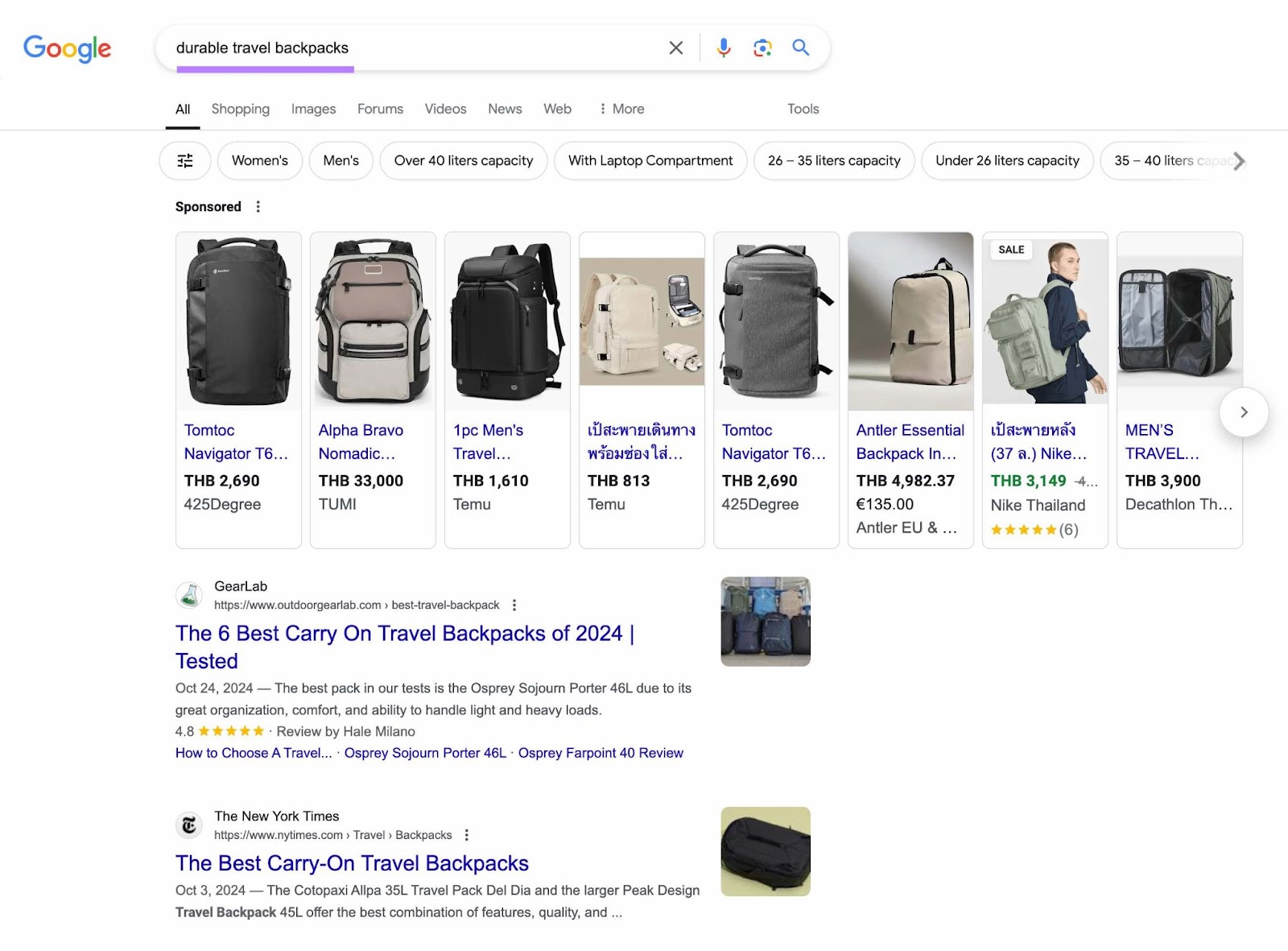
The 4 Main Types of SEO for Business Owners
You can break SEO down into lots of different types. But there are four broad categories that business owners should care about:
- On-page SEO: This focuses on optimizing your webpages to help them rank higher in SERPs for your target keywords, which can bring more potential customers to your site
- Technical SEO: This involves optimizing your site’s technical performance to improve the user experience and make it easier for search engines to find, understand, and store all of your important pages
- Off-page SEO: Off-page SEO involves building backlinks (links on other sites that point to your site), engaging in digital PR, and other off-site activities to improve your business’s online visibility
- Local SEO: This focuses on improving your business’s visibility for local search queries, and is often centered in part around optimizing your Google Business Profile
Why Is SEO Good for Business Growth?
There are lots of reasons why you should invest in SEO as a business owner. But these are the most important ones from a growth perspective:
Drive More Sales
Effectively implementing SEO tactics improves your website’s visibility in SERPs for relevant keywords, which helps you attract more organic search traffic from people who might become paying customers.
Hepper, a pet furniture company, saw a staggering 2,964% increase in revenue within two years of investing in SEO.
They used Semrush to identify the most relevant and high-impact keywords for their business and created 5,000 high-quality blog posts targeting those keywords.

This is obviously an extreme example—you don’t need to start writing 5,000 posts. But even at smaller scales, the extra traffic that SEO can drive to your business’s website can add up to meaningful sales increases.
Increase Brand Awareness
Higher search engine rankings make it more likely that your potential customers will see your brand in search results, which increases your brand awareness.
Aside from visibility, it also keeps your brand top-of-mind with your audience.
When potential customers see your site ranking every time they search for something related to your business, they’re more likely to perceive your business as a credible and authoritative source.
This repeated exposure can build trust with your target audience. Making them more likely to choose your business when they’re ready to engage or make a purchase.
Reduce Reliance on Paid Ads
SEO helps businesses cut their dependence on paid advertising by driving consistent organic traffic without the need for continuous ad spend.
While paid ads can provide immediate visibility, they are often expensive. Especially in competitive industries where cost per click (CPC) is high.
For example, sectors like legal services or insurance often see CPCs ranging from $50 to $100 or more per click.
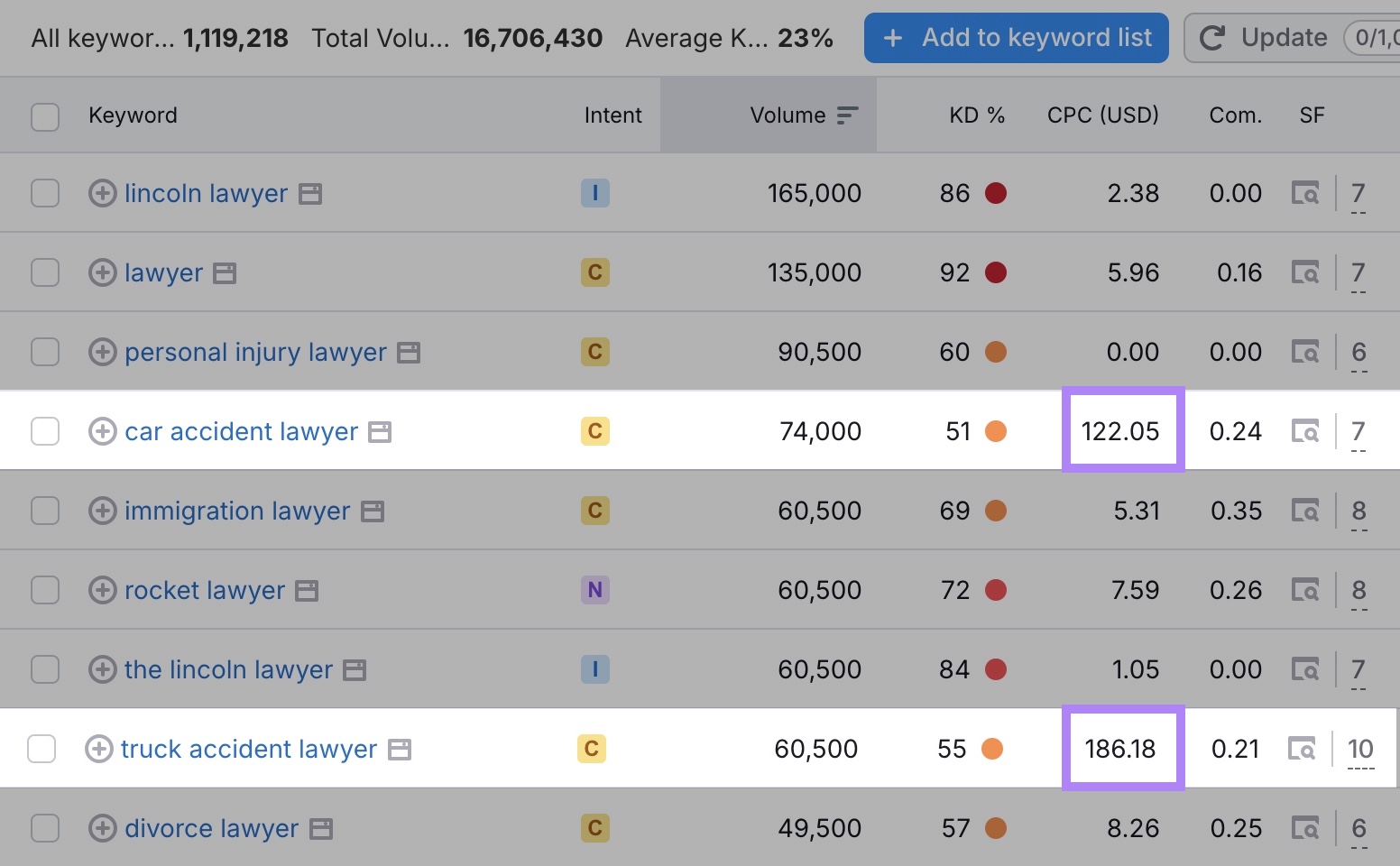
Online veterinary health and wellness platform BetterVet is a good example of just how impactful SEO can be compared to ads.
In December 2022, BetterVet struggled to increase their organic search traffic. This left the company heavily reliant on paid advertising.
But by the end of 2023, BetterVet made a remarkable turnaround by focusing on SEO to grow their organic search traffic by over 2,000%. And this allowed them to significantly reduce their ad spend.
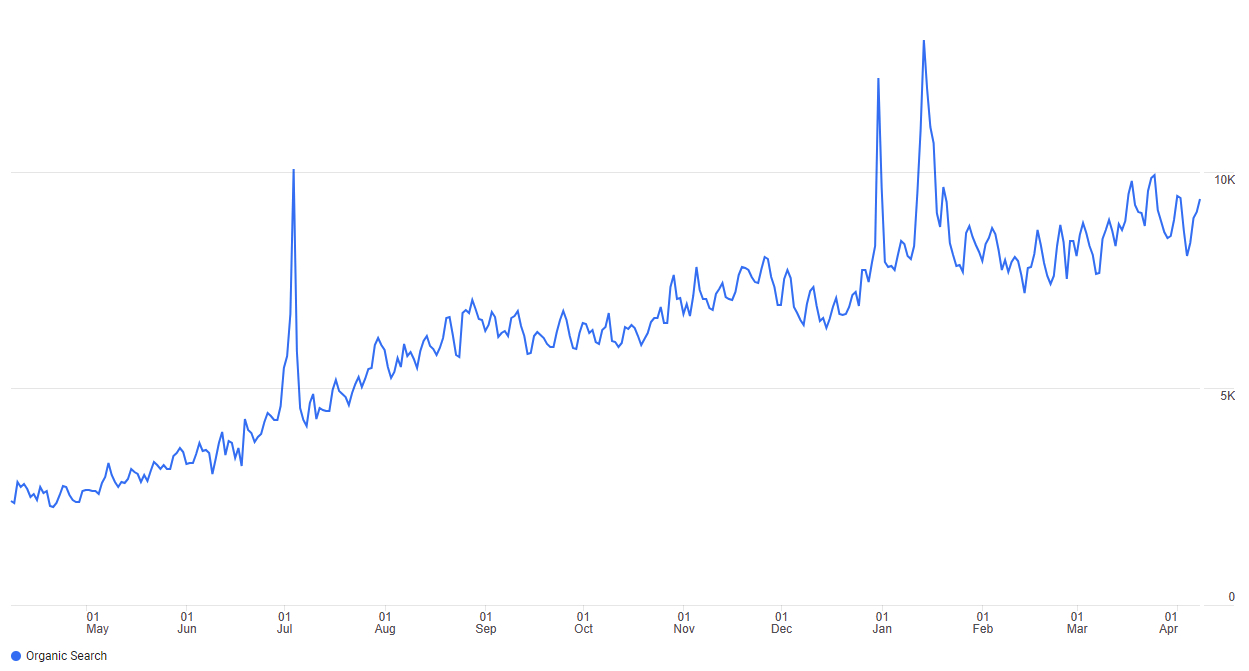
Achieve Long-Term Results
SEO can deliver long-lasting results that continue to benefit your business over time without much work beyond the initial time and effort you invest.
You can continue to drive organic search traffic to your website for months or even years.
This is because organic search engine positions are determined by Google ranking factors—not how much money you spend.
How to Use SEO for Online Business Growth
SEO has a lot of moving parts, so start with these key steps to get the most out of your efforts:
1. Perform Keyword Research
Keyword research is the process of finding the most relevant and valuable keywords you can create content around to help your site appear in search results when potential customers search for them.
How do you perform keyword research?
You can do it in a few ways, but using a reliable keyword research tool like the Keyword Magic Tool is the most efficient option.
Simply launch the tool and enter a seed keyword (a broad term related to your business, product, service, or industry).
Select your target country from the drop-down menu and click “Search.”
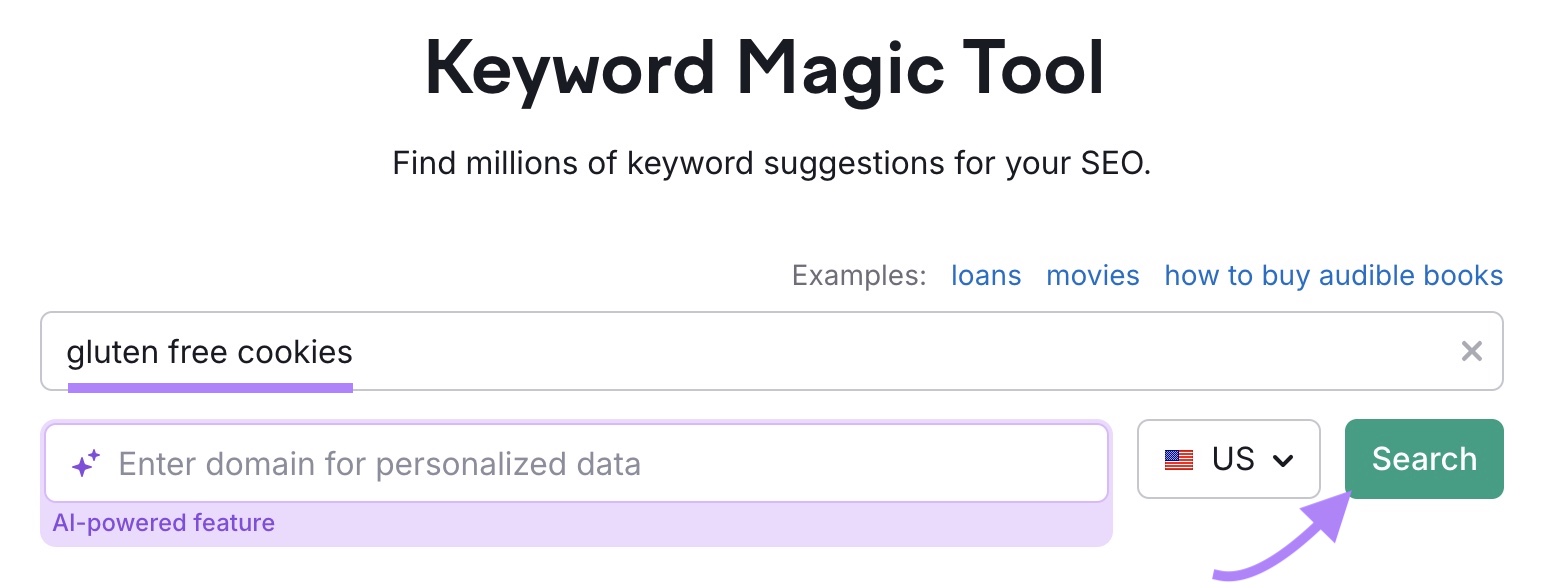
Next, you’ll see a list of related keywords. Along with additional metrics for each keyword, like:
- Search intent: The purpose behind the search (more on this below)
- Search volume: How many searches the term gets each month
- Keyword difficulty (KD %): A score out of 100 indicating how tough it is to rank in the top 10 search results for that keyword (lower is easier)
Use filters to identify the most relevant and promising keywords from the list.
For example, the “KD %” filter lets you identify keywords that are easier to rank for.
Simply select “Easy” or “Very Easy” to find keywords with low competition.
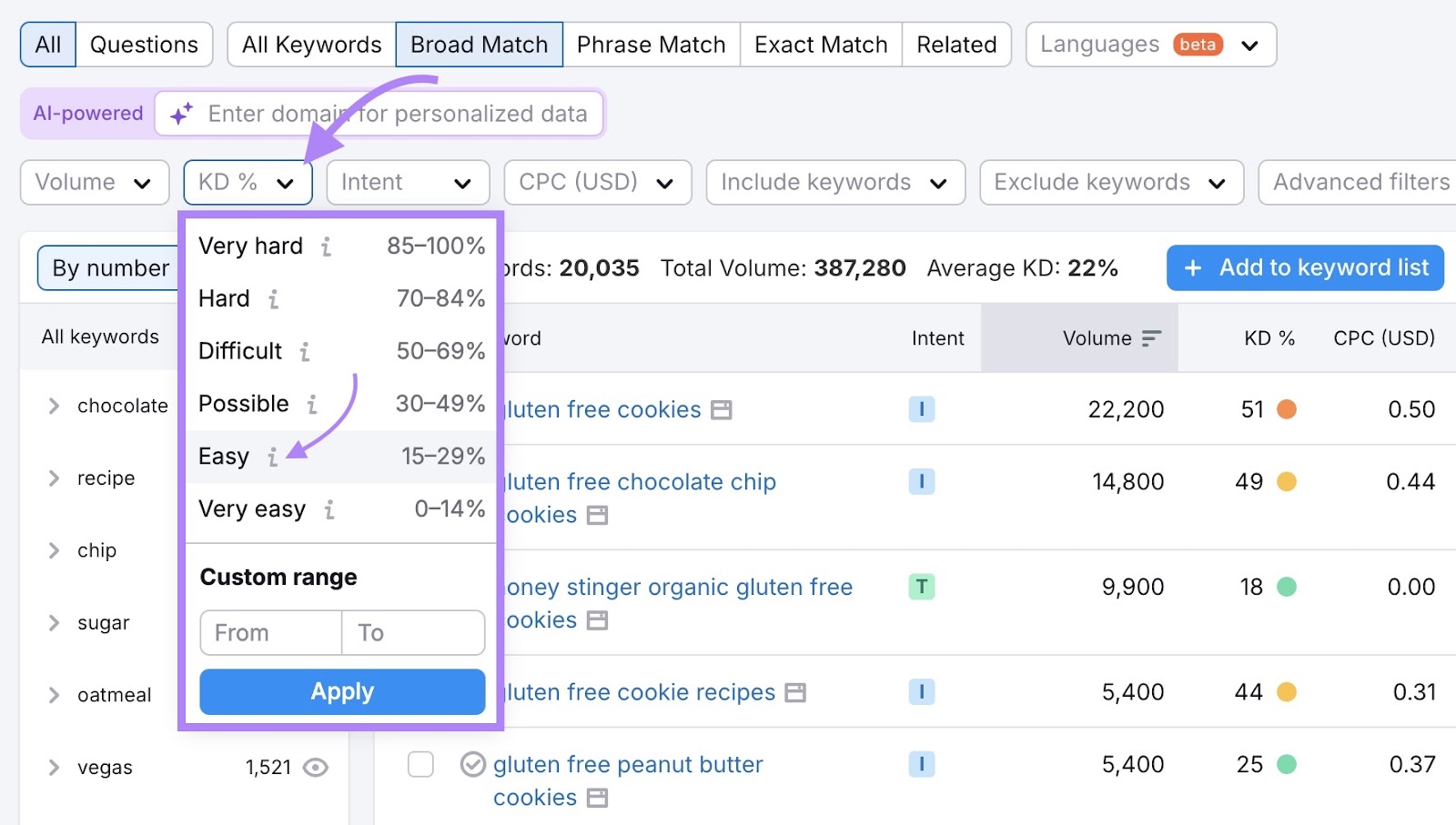
You might also want to filter by search intent to only see keywords that are likely to lead to a conversion.
There are four main types of search intent:
- Navigational: The searcher is looking for a specific website or page (like “youtube” or “facebook login”)
- Informational: The searcher is looking to learn more about a topic or concept (e.g., “how to unclog a drain”)
- Commercial: The searcher wants to do research or compare options to inform a decision (like “best gaming laptop” or “monday vs asana”)
- Transactional: The searcher is ready or almost ready to take action (e.g., “buy nike shoes” or “subscribe to spotify”)
Business owners are typically most interested in commercial and transactional intent keywords. Because the people searching for these are closer to making a purchase decision.
To filter for these keywords, just click the “Intent” drop-down, select the checkboxes next to “Commercial” and “Transactional,” and click “Apply.”
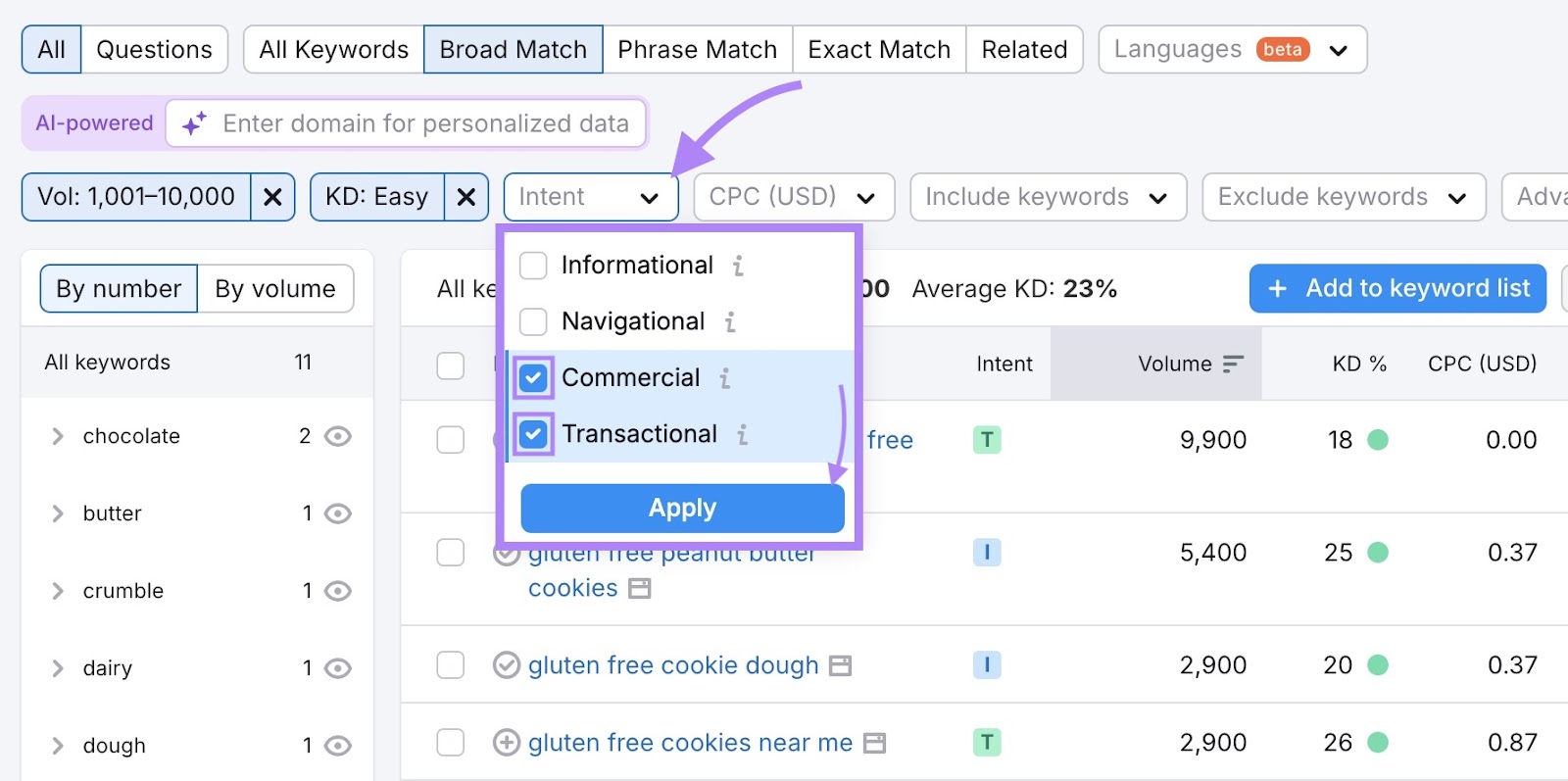
As you identify promising keywords, jot them down.

2. Build Topic Clusters
A topic cluster is a group of connected pages on a website that are all focused on a main topic, and using them can help you build topical authority that leads to better rankings and more trust among visitors.
Each cluster has a main pillar page that gives a comprehensive overview of the topic. And then there are several subpages (or cluster pages) that dive into related subtopics in more detail.
By building topic clusters, you create a well-organized network of related content. This makes it easier for both users and search engines to find information on your site.
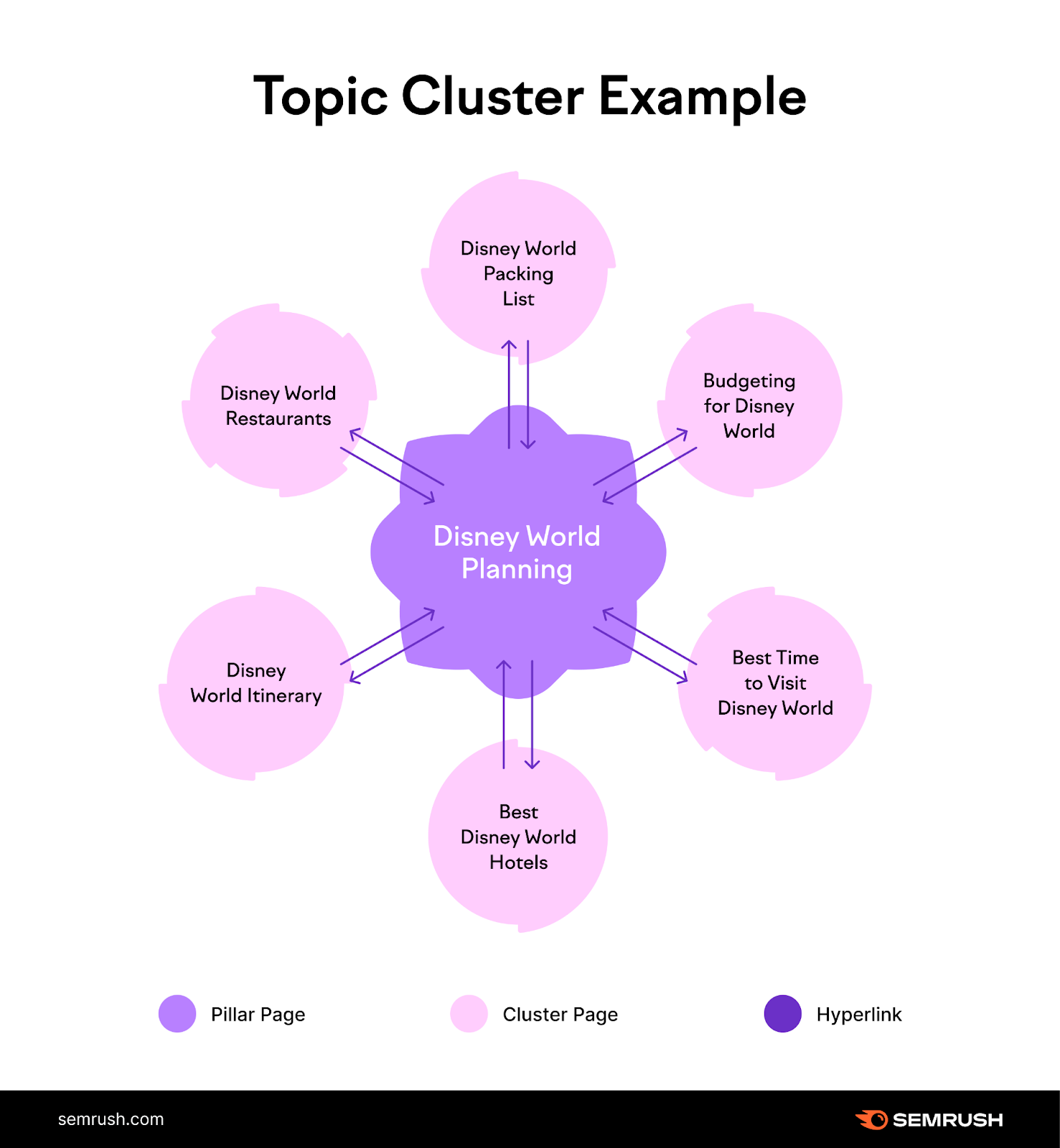
And because this approach helps you build your site’s credibility in a particular subject area, it’s particularly useful for business owners.
Use the Keyword Strategy Builder to build topic clusters.
Start by entering up to five keywords you’ve identified during the keyword research phase.
Then, select your target market location and click “Create list.”
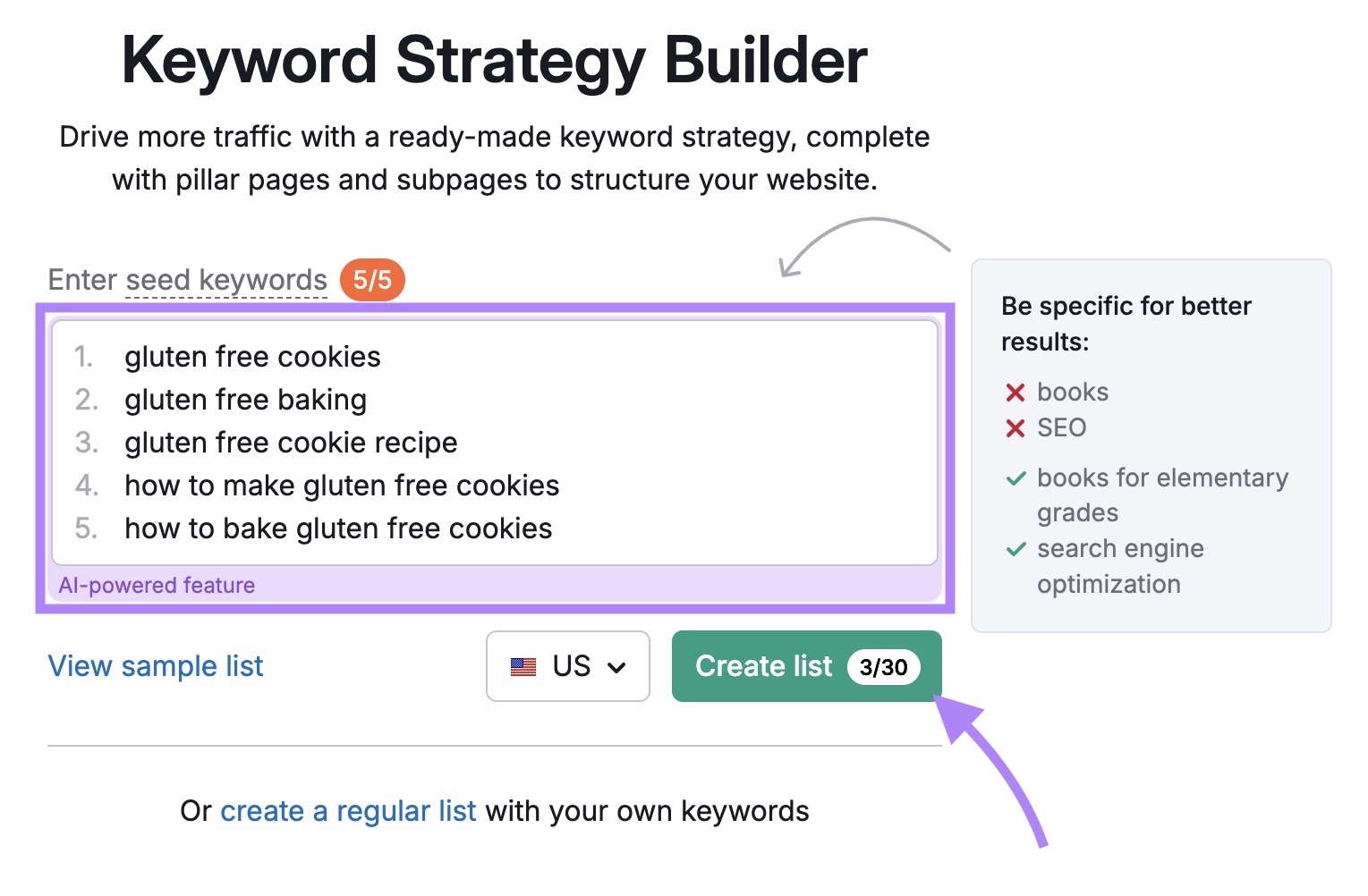
The tool will generate a visual map of suggested pillar pages and subpages.

Scroll down to the table to see the keywords and metrics (like search intent, search volume, and keyword difficulty) for each pillar and cluster page.
Choose the topics that seem the most promising based the displayed metrics, so you can start creating content.
3. Create High-Quality Content
Creating high-quality content that targets your chosen keywords is most likely to rank and drive traffic to your site.
Use ContentShake AI to create high-quality, SEO-friendly content for your business.
Simply launch the tool and enter the topic you want to cover. Then click “Generate article.”

The tool will suggest a post title and target keywords. And you can customize settings like word count and tone of voice.
Tick the box next to “Add an extra SEO boost” to further optimize the content. And the one next to “Add relevant Unsplash images” to automatically incorporate stock images.
When you’re ready, select “Create article.”
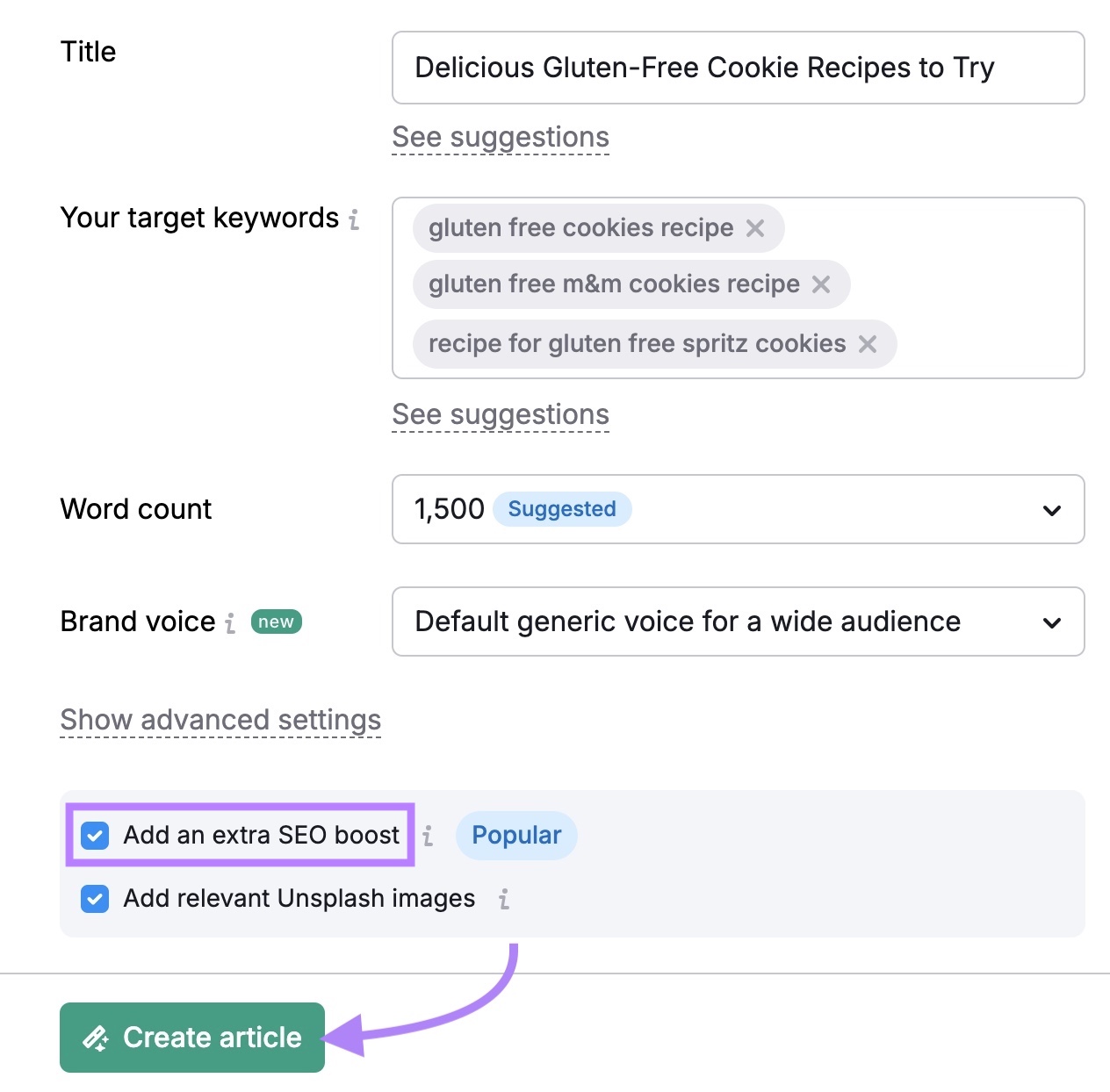
ContentShake AI will generate a complete draft that you should review and edit thoroughly before publishing. Because AI-generated content can sometimes be factually incorrect, lack a human touch, or miss nuances that resonate with your specific audience.
Make changes to the draft by clicking “Go to editor.”
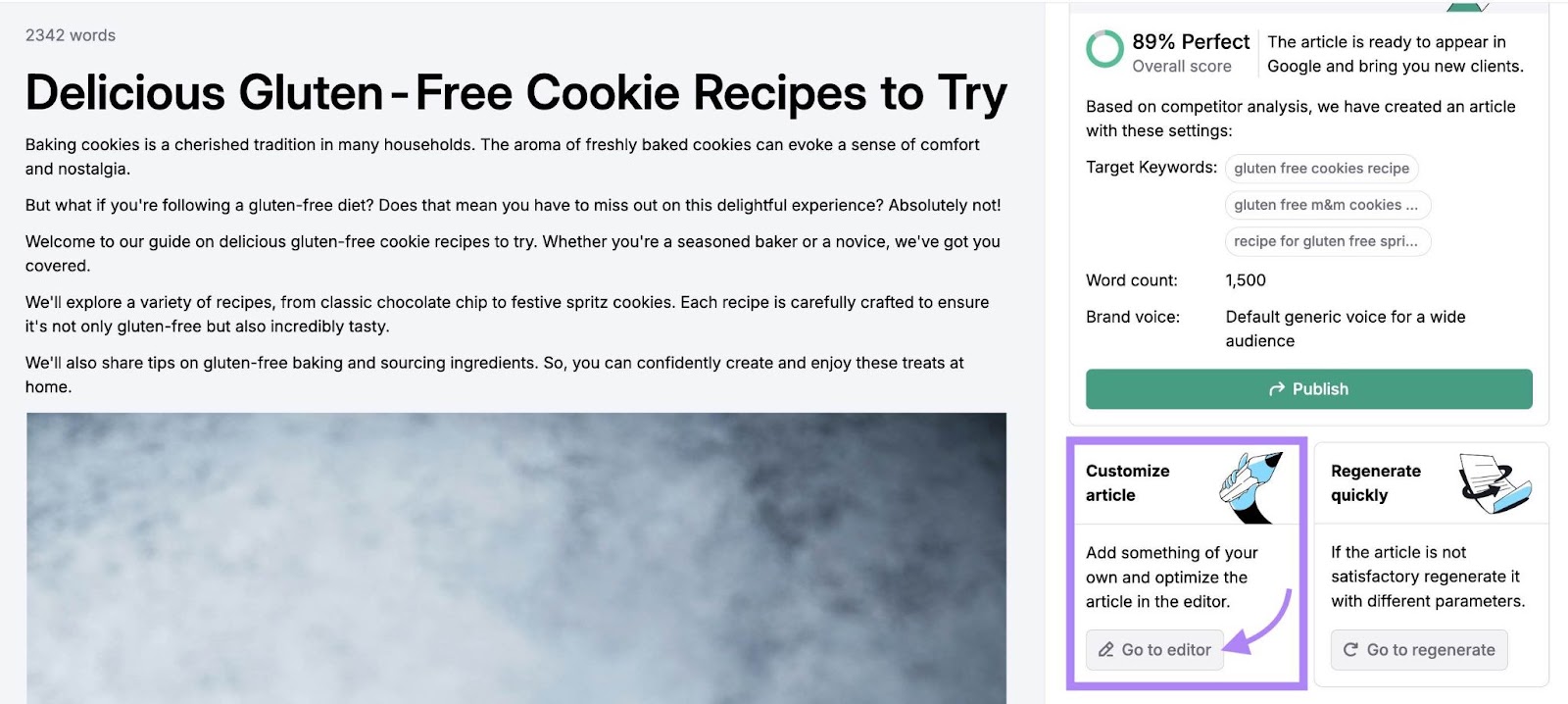
Start improving your article by checking the tool’s SEO, readability, and tone suggestions.
Then, add your own experience and expertise to tailor the content to your business needs.
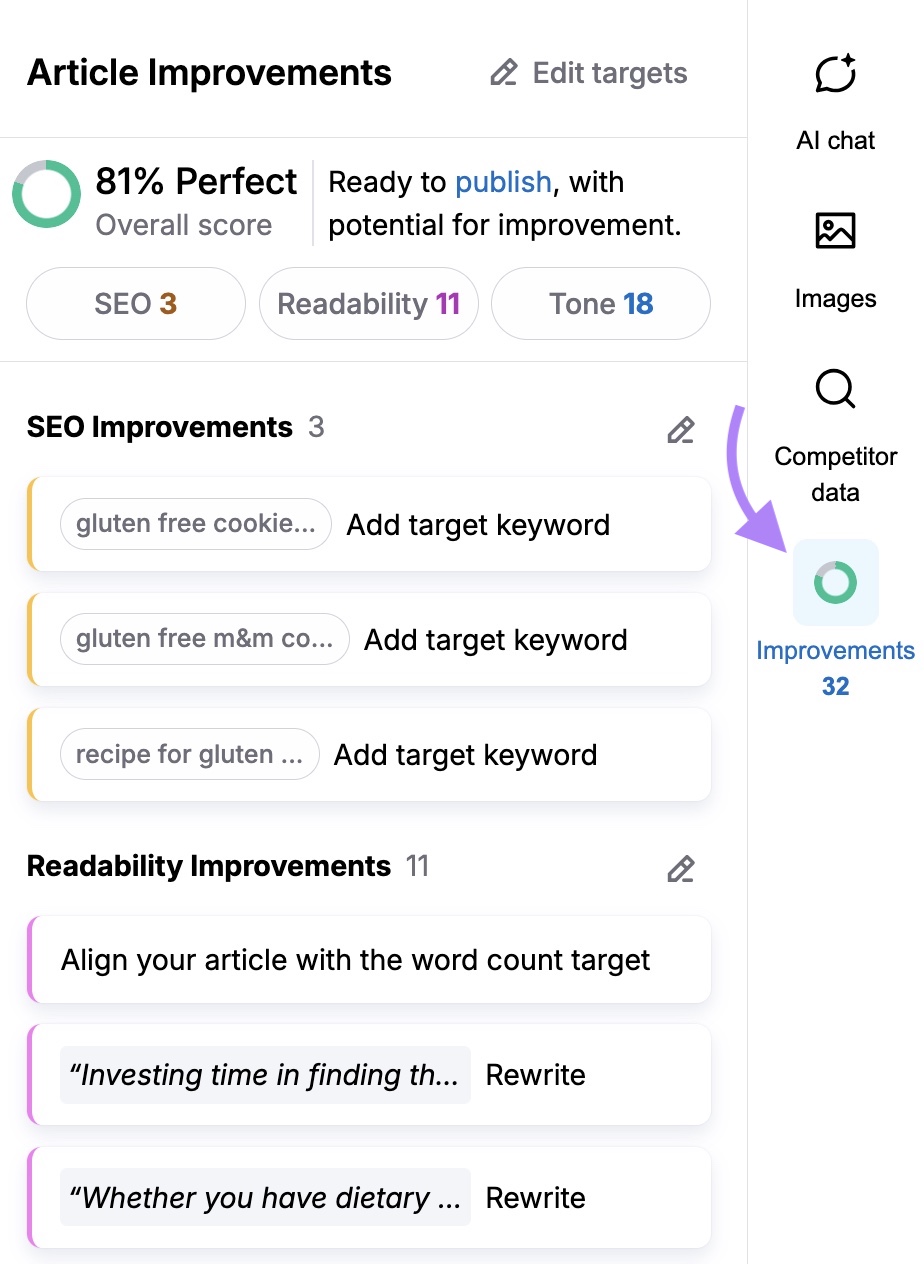
You can then publish the post directly to your WordPress site, send it to Google Docs, or share it with your team.
4. Improve Your Website’s Technical SEO
Your site’s technical health matters for SEO because Google uses various user experience signals in its ranking systems.
When your site loads quickly, has no broken links, and is easy to navigate, it can lead to better rankings. Plus, ensuring a positive experience means users are more likely to stay and explore.
So, identify and fix any technical issues that may be affecting your site’s performance.
How do you do this?
With a tool like Site Audit.
It performs over 140 checks for both on-page and technical SEO issues. And provides actionable recommendations on how to address them.
Just launch the tool, enter your domain name, and click “Start Audit.”

Follow our configuration guide to set up your project.
Once it’s complete, you’ll see SEO issues by category in the “Thematic Reports” section. Like crawlability, HTTPS, and site performance.
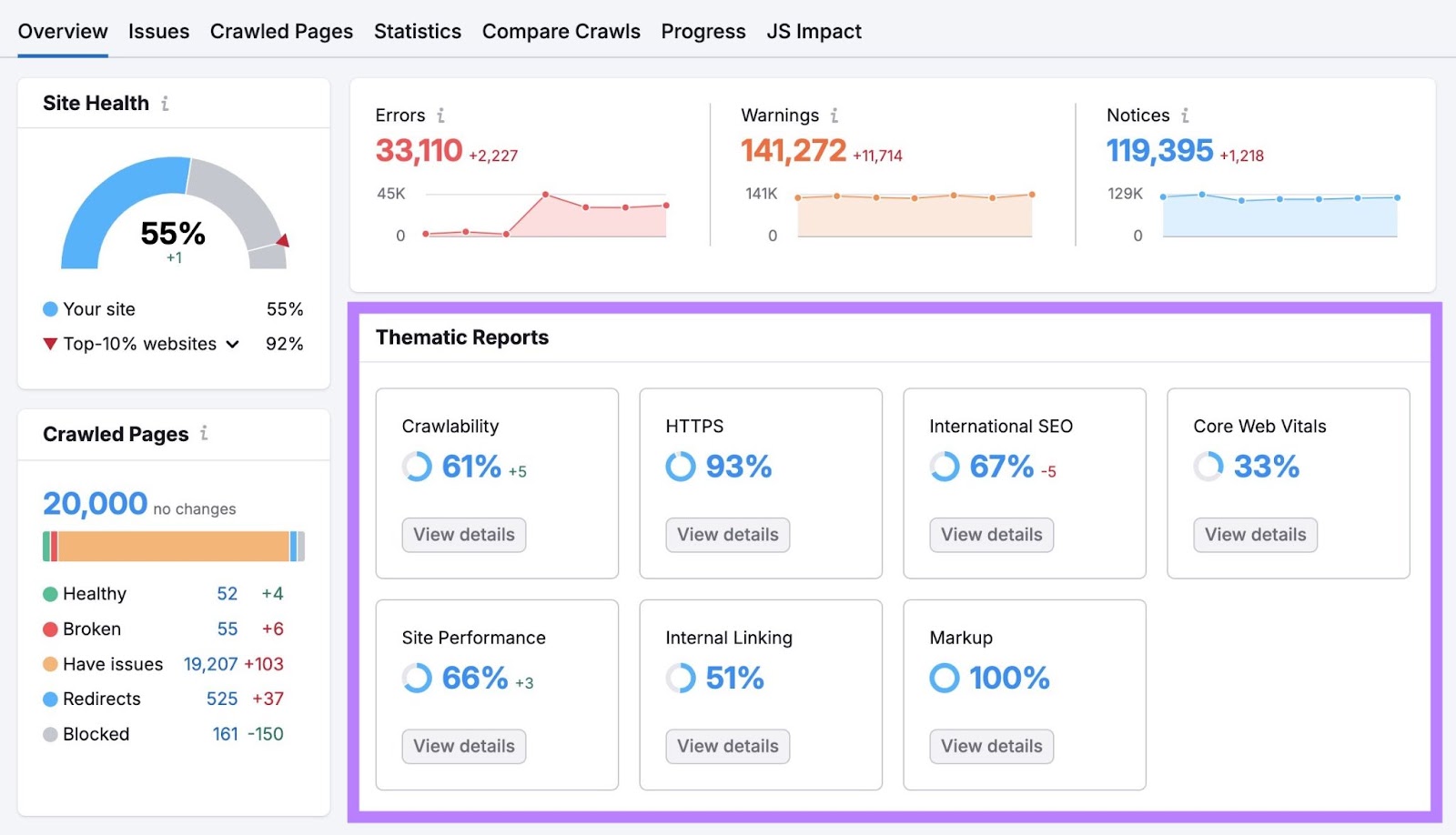
Click “View Details” under any section to see specific issues related to that category.
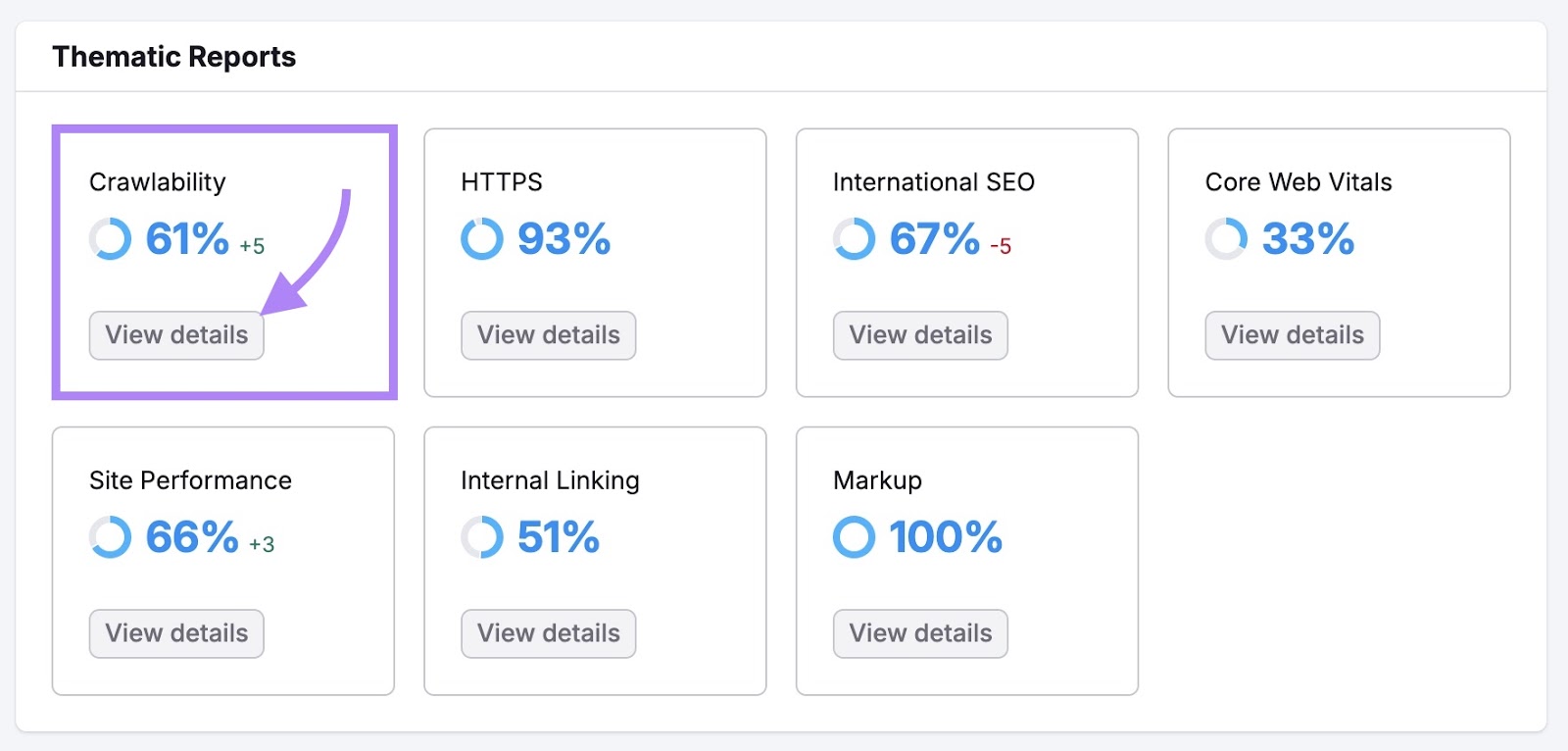
Or head to the “Issues” tab to see a full list of errors, warnings, and notices for your site.
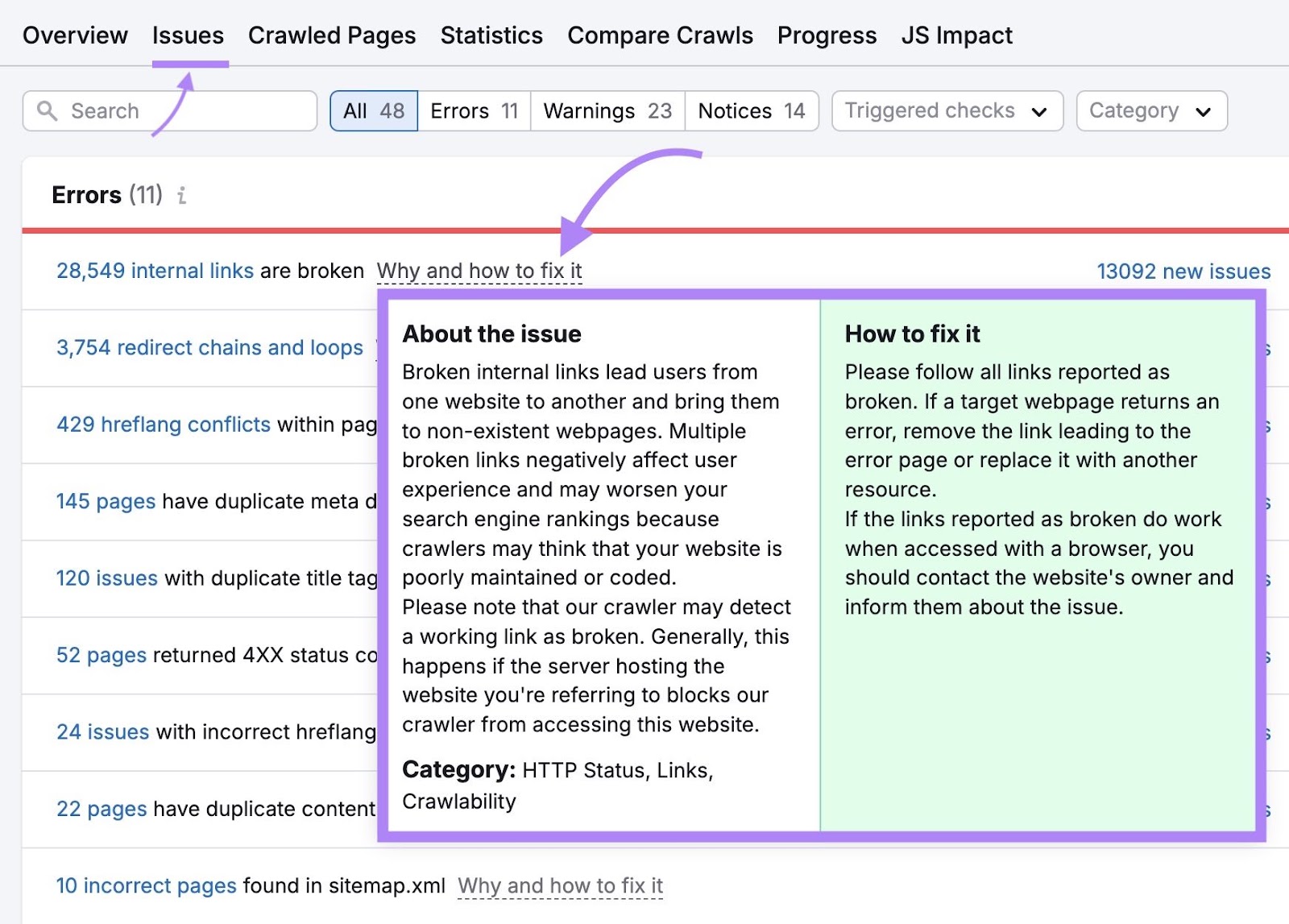
Work through these issues to improve your site’s technical SEO.
5. Manage & Optimize Your Business Listings
Business listings are citations that display important information about your business (name, address, phone number, website, and opening hours), and they’re great for improving your visibility.
You can create listings on platforms like Google, Yelp, and Facebook to reach people who use these sites to search for businesses like yours.
These listings can also improve your chances of appearing in relevant local search results. Because search engines pull information about your business from these listings and use them to verify accuracy when determining what to display in local search results.
Here’s what local search results look like in Google:
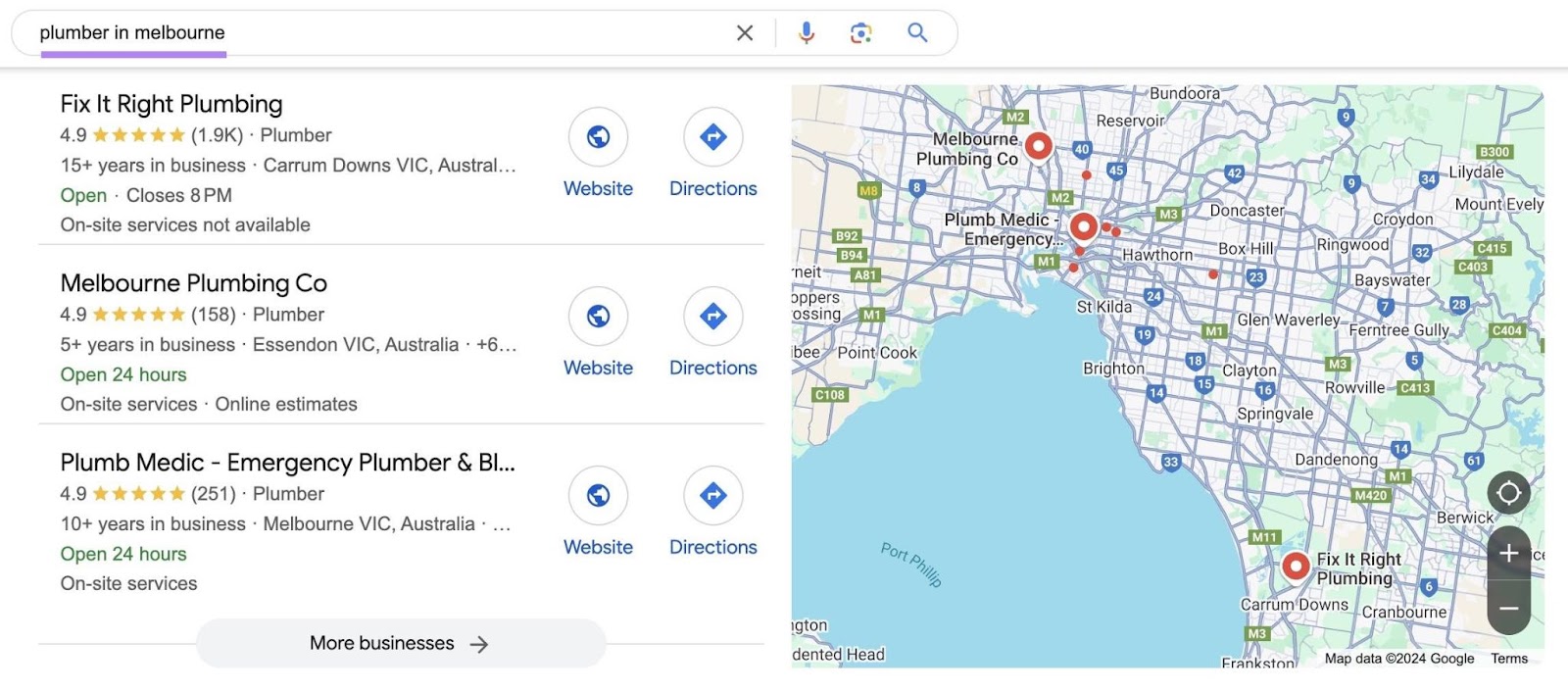
And here’s what they look like in Bing:
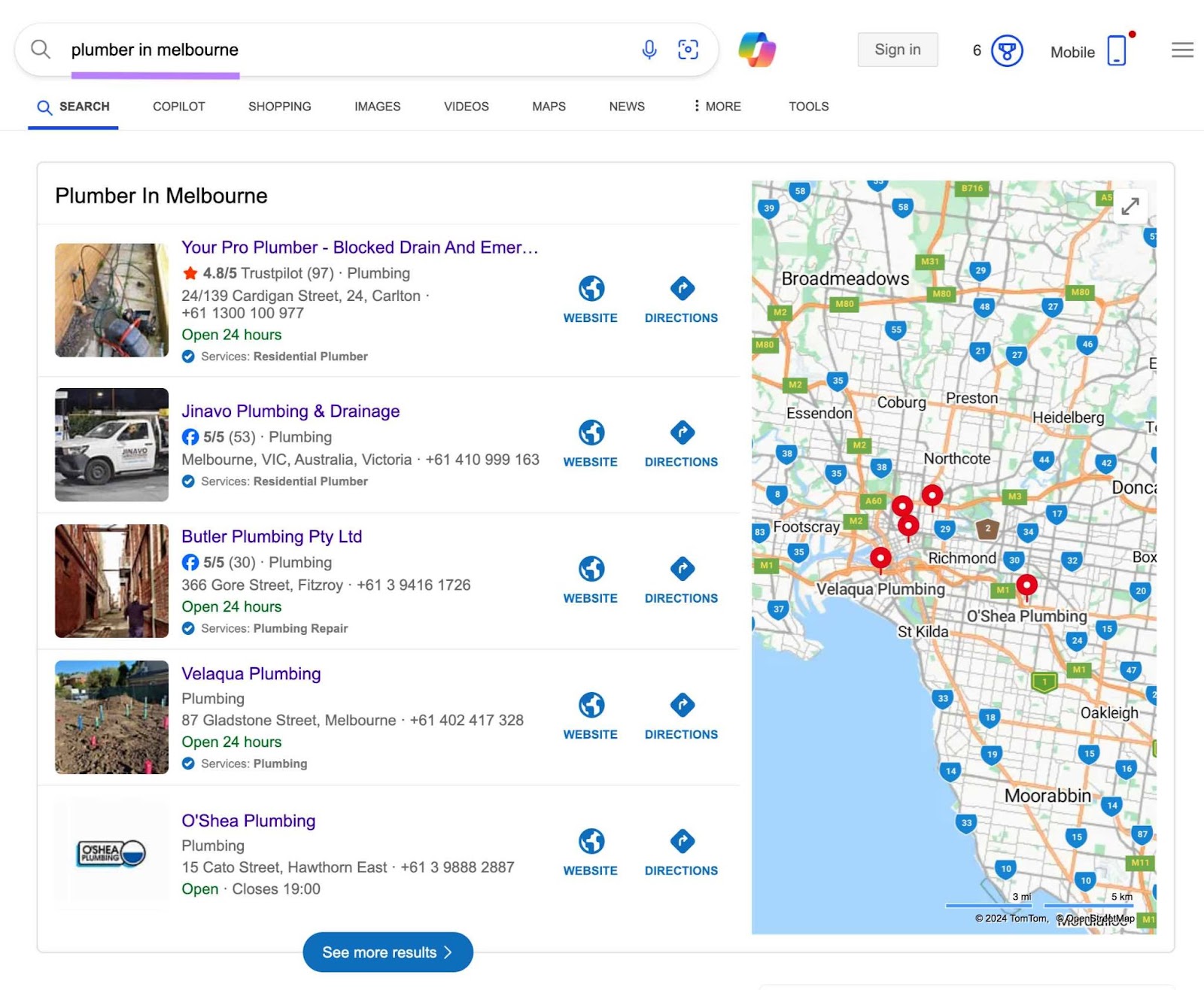
While listings are valuable, it can be tough to manage listings across multiple platforms.
To simplify the process, use the Listing Management tool.
To get started, just search for your business in the tool and select the correct one that appears.
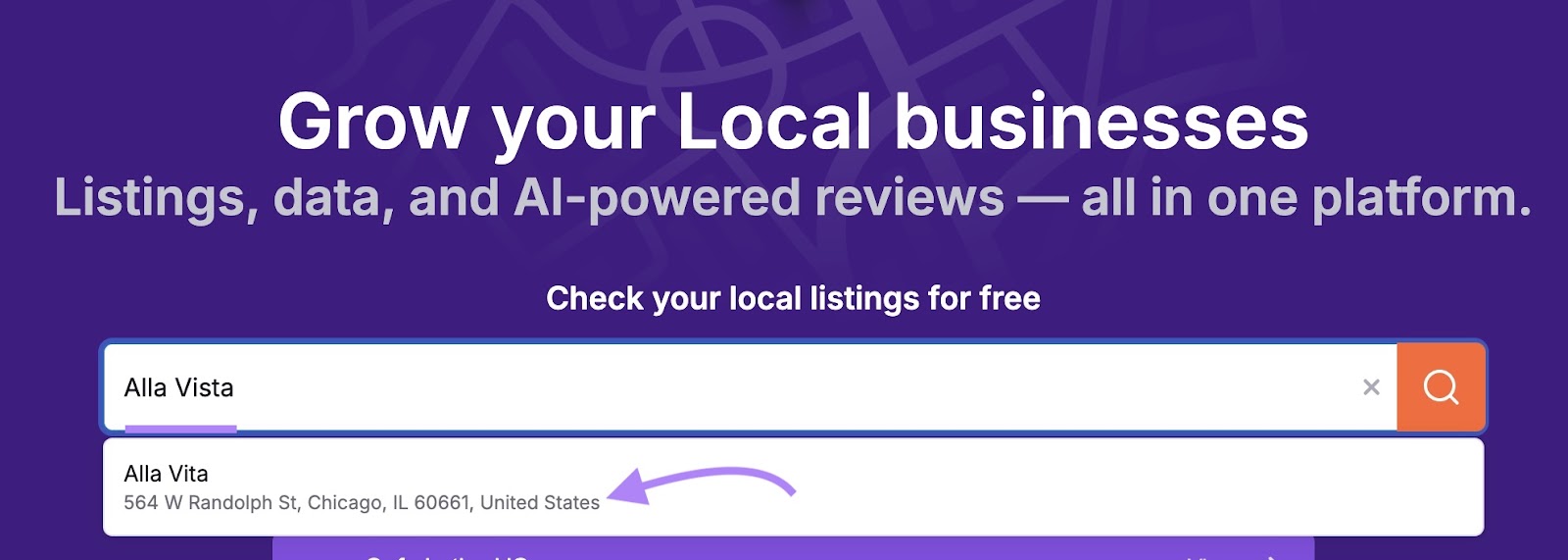
Then, you’ll see information about the directories you’re listed in (and the ones you’re not). And any discrepancies you should fix.
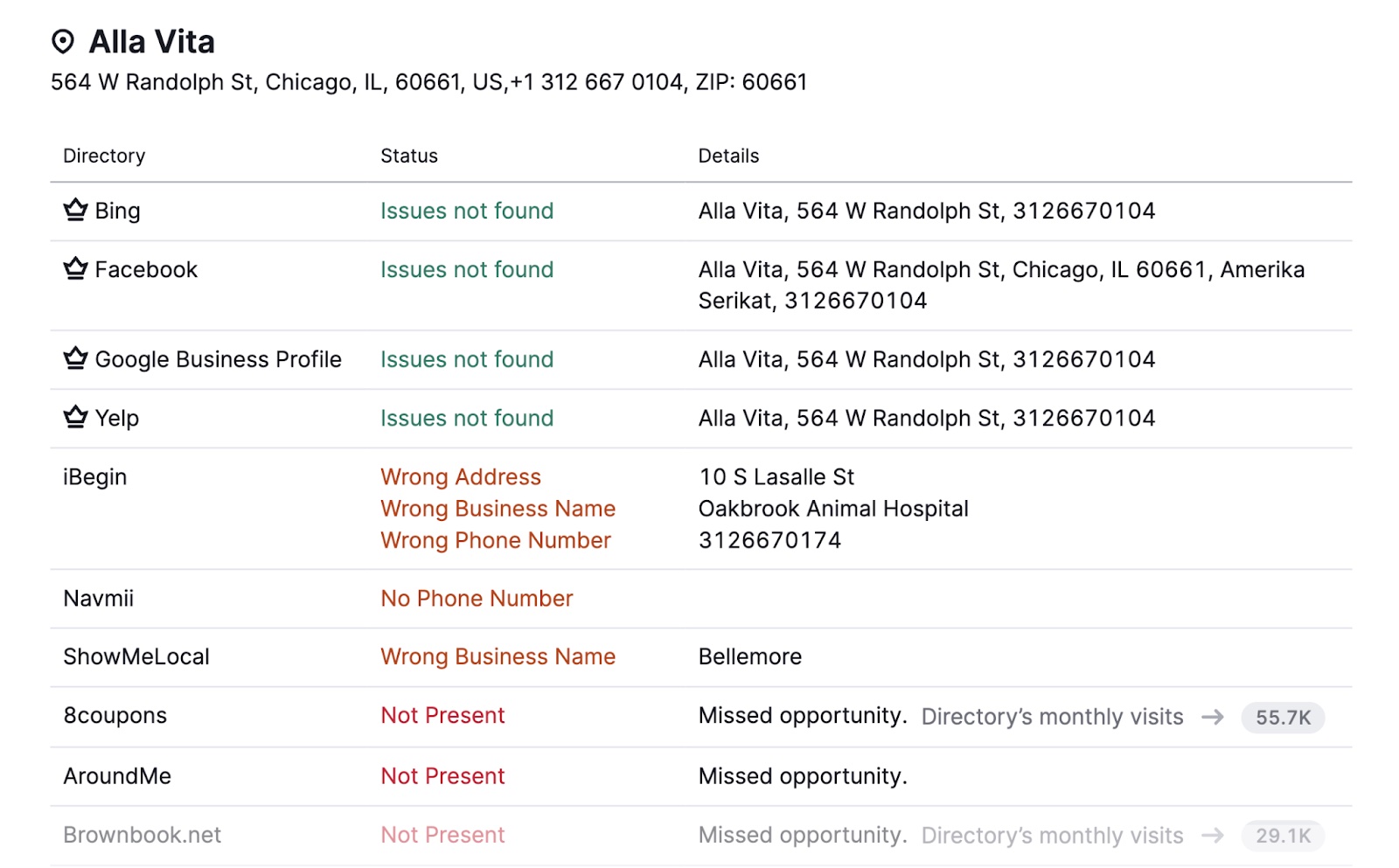
Fixing these issues will ensure users (and search engines) can find the correct information about your business.
If you opt for a paid plan, you’ll also be able to automatically distribute your business information across listings. And even respond directly to Google reviews in the tool.
6. Build High-Quality Backlinks
The more high-quality backlinks your website has, the better it may rank in search results.
Backlinks from reputable, high-authority sites act a bit like endorsements for your website. They signal to search engines like Google that your content is valuable and trustworthy.
How do you get high-quality backlinks to your site?
One way to do this is by running a link building campaign. This involves identifying potential websites that could link to your content and reaching out to them directly.
Use the Link Building Tool for this.
To get started, launch the tool and enter your domain. Then, click “Start Link Building.”
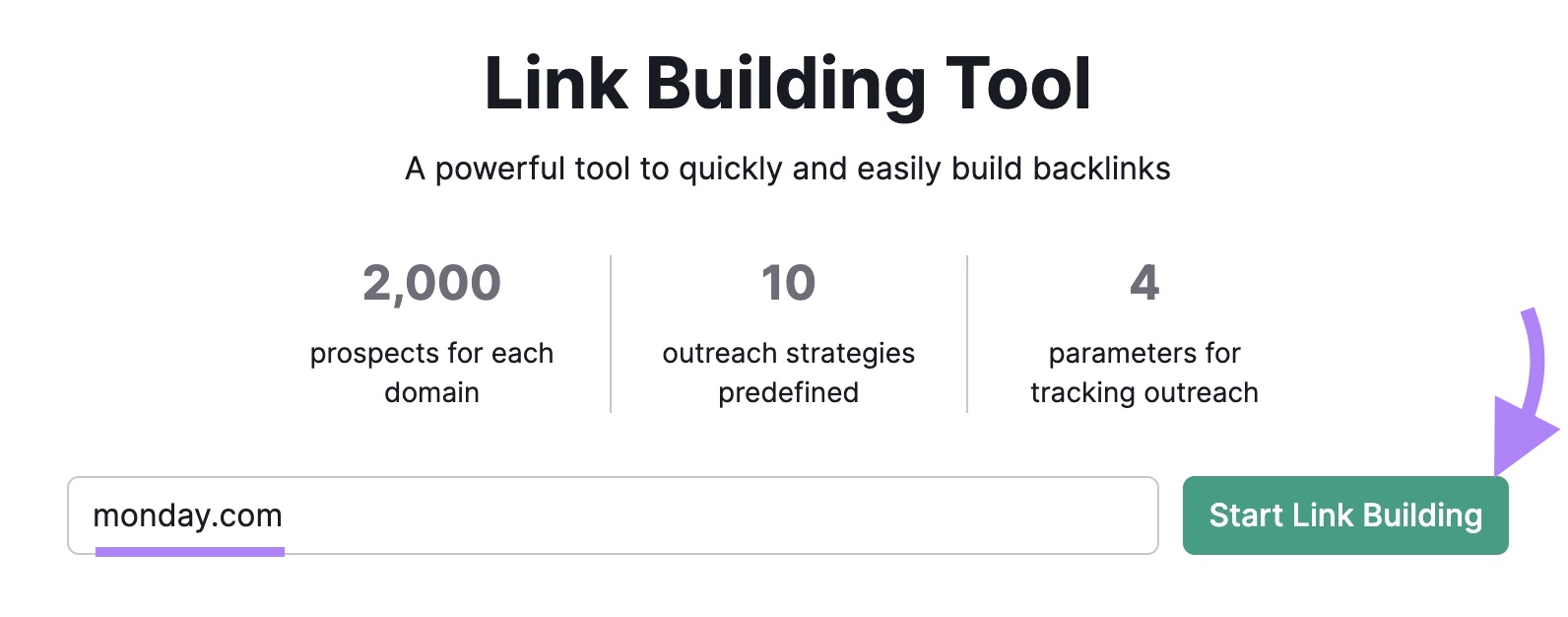
Follow the prompts to finish setup, then head to the “Prospects” tab to see a list of suggested sites to reach out to.
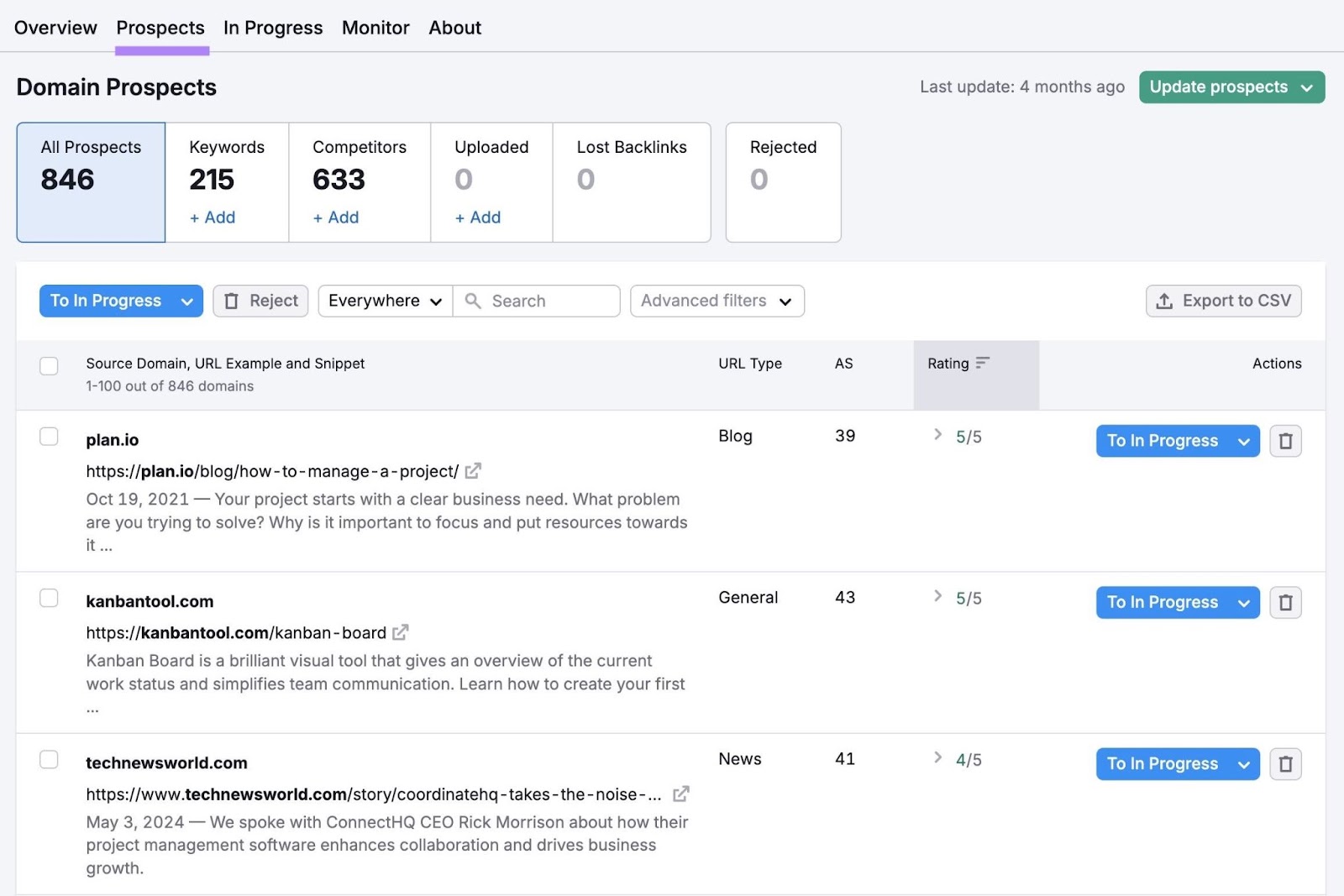
Review the list carefully, and move the most promising prospects to the “In Progress” tab by clicking the “To In Progress” button next to each one.
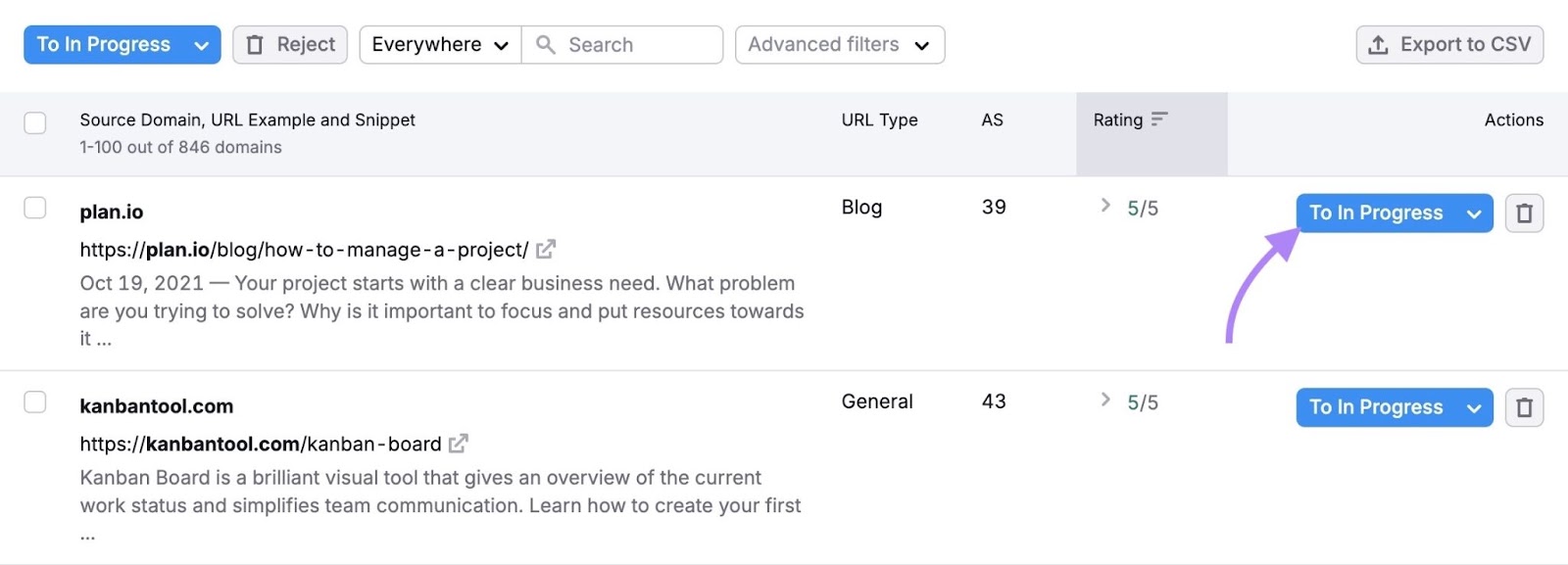
You can directly contact these prospects from within the tool’s interface.
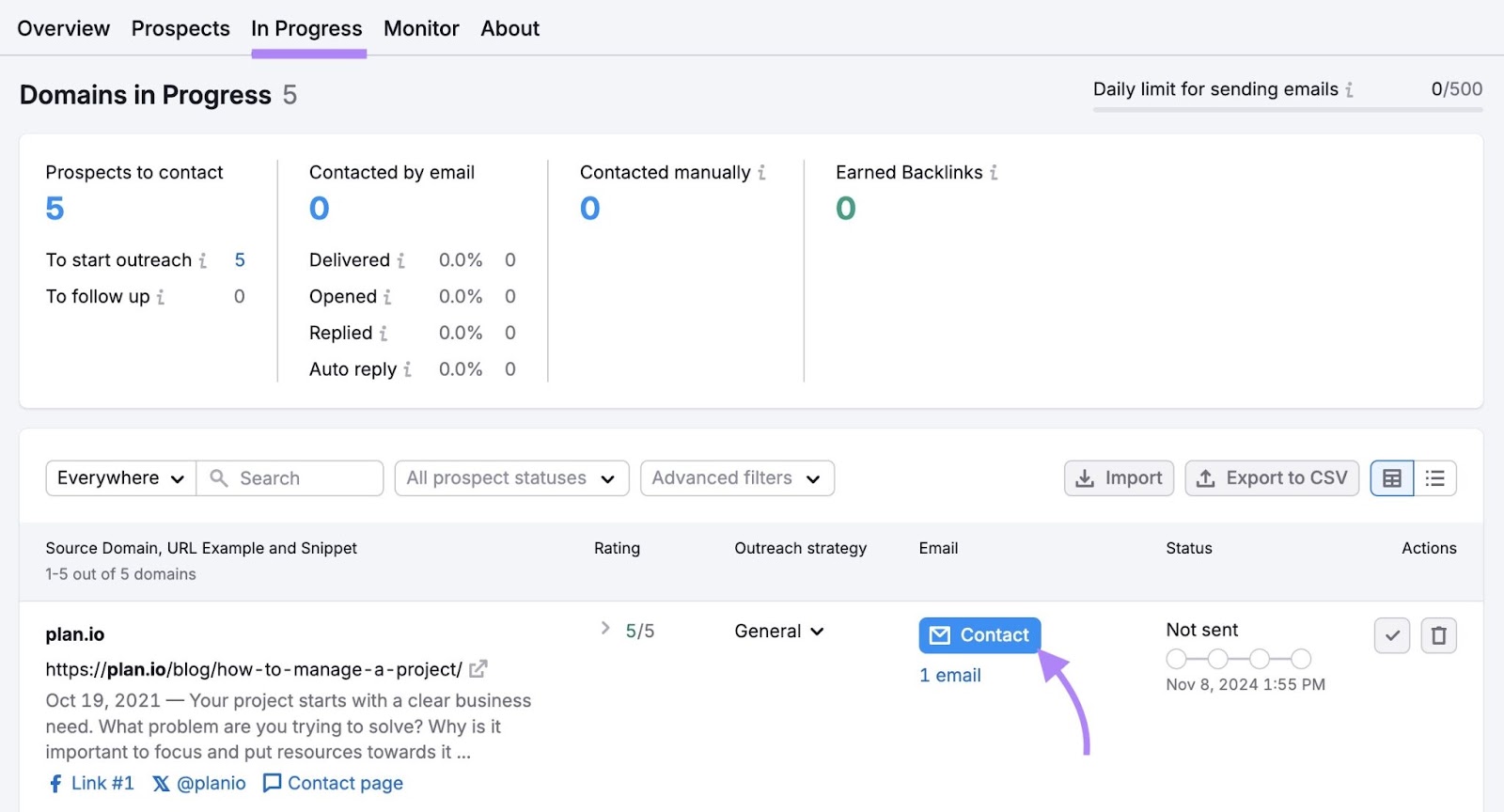
Just craft a personalized email asking the prospect to link to your site. This is easiest if you’re able to recommend a valuable piece of content they can link to.
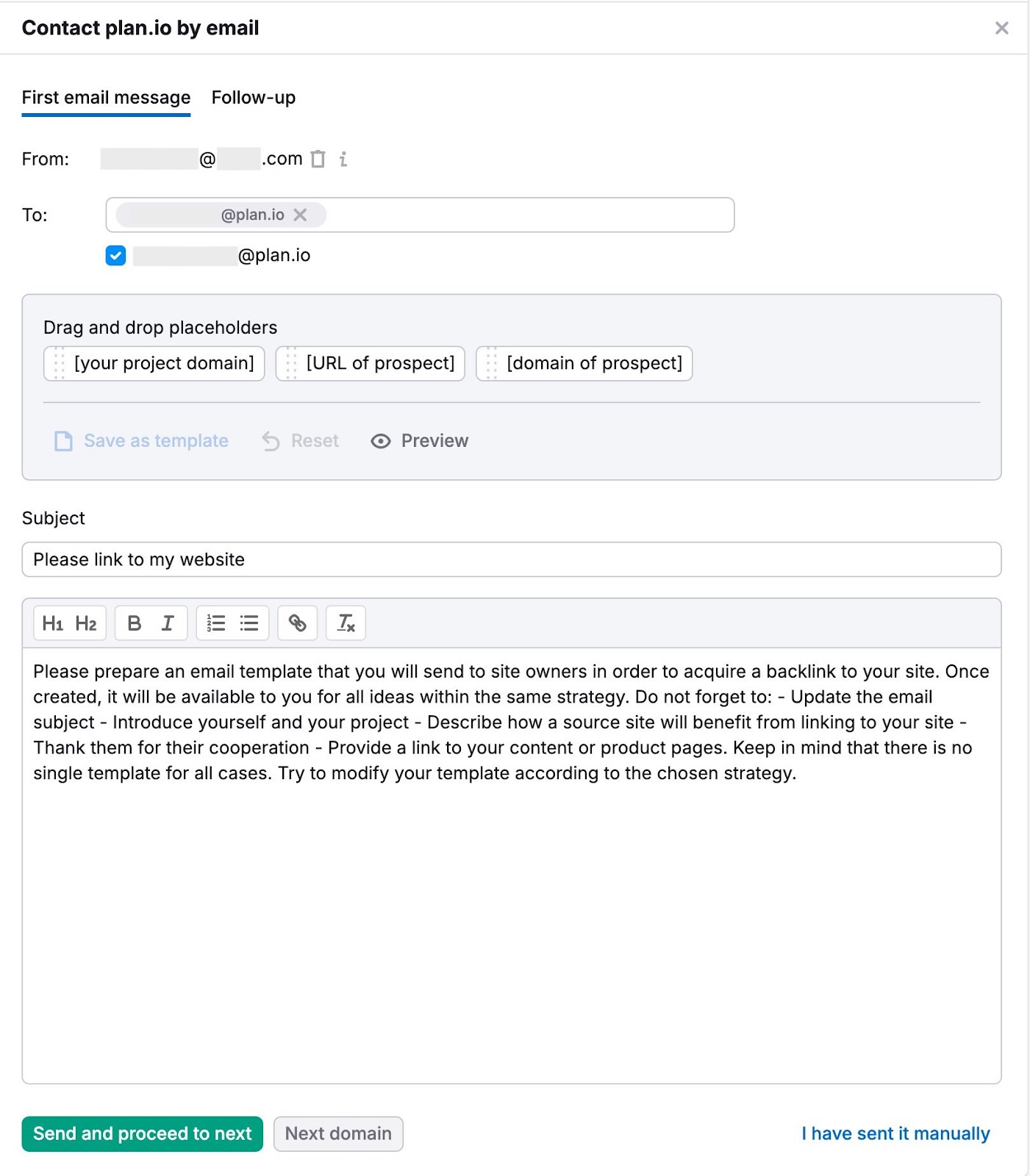
Finally, monitor the progress of your campaign in the “Monitor” tab to see how well your efforts are paying off, so you can adjust your strategy as needed.
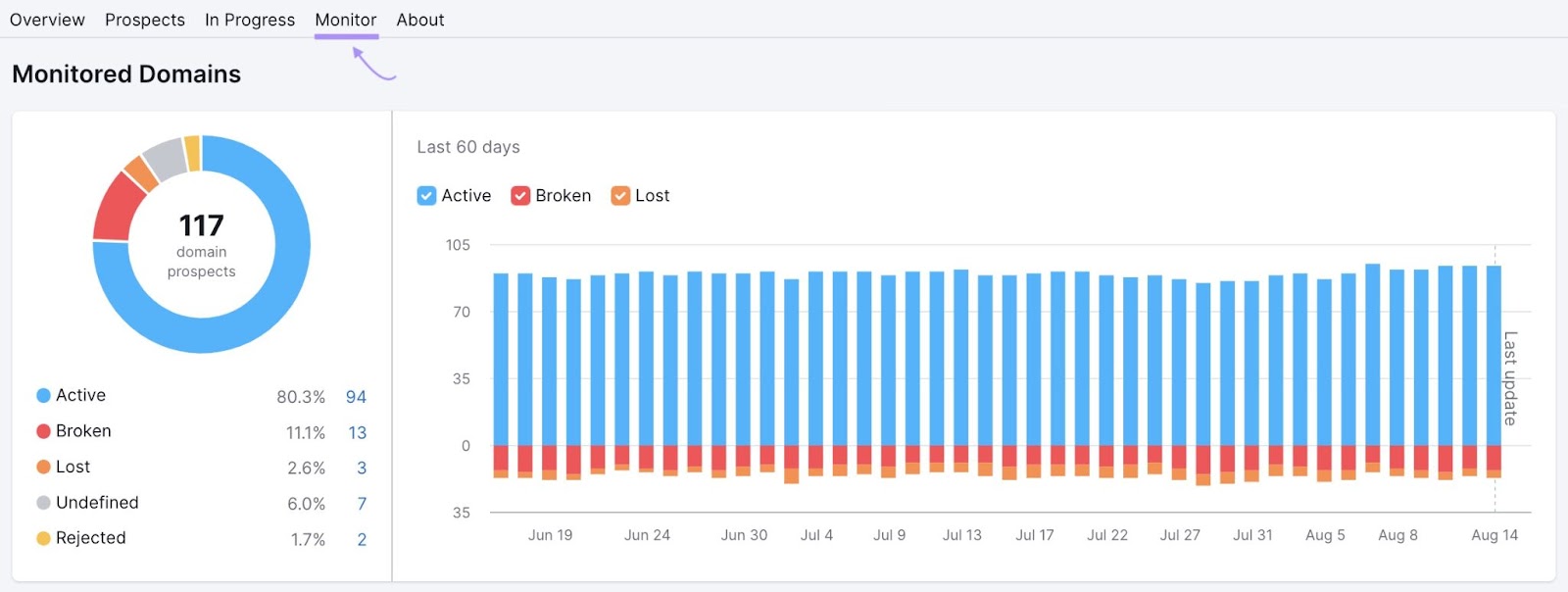
7. Track and Monitor Your Progress to Improve Your SEO Strategy
Getting the most out of your SEO efforts involves tracking performance to get ideas on ways to improve.
The specific metrics you track will depend on your goals. But some common ones to track include:
- Organic traffic
- Keyword rankings
- Click-through rate
- Conversion rate
As more visitors land on your site, you can monitor:
- Which product pages or blog posts attract the most traffic
- Which pages your visitors spend the most time on
- What content generates the most engagement
- Which pages drive the most conversions
You can find a lot of this data using tools like Google Analytics (with conversion tracking set up).
You can then analyze high-performing content to gain an understanding of why it performed so well. And then apply those insights to your new content and any low-performing content.
Use SEO to Grow Your Business
It should be clear by now that SEO can help you grow your business—without requiring you to invest heavily in ads.
And while it often takes time to see results, you can speed things up with the right SEO tools.
Sign up for a free Semrush trial to access 55+ tools you can use to get started.


